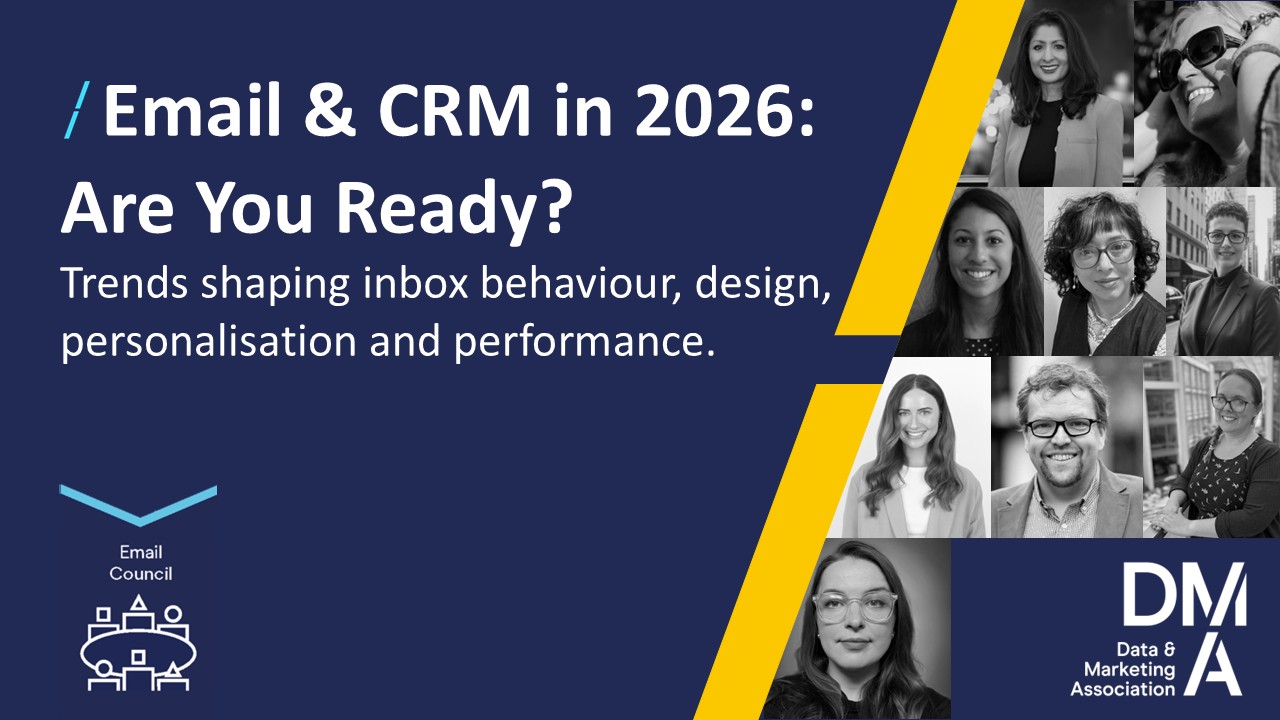Consumer Email Tracker Series: The Omnichannel Communication Race
22 Jun 2023

This article is written by Kostas Karagkounis, Deliverability Operations Lead at Emarsys, who is part of the Email Council and its Research Hub.
The Communication Race
It's that time of the year when the DMA releases their insightful report on what consumers like and dislike about our marketing programs, what encourages them to interact with our brand, and the main reasons why they choose to opt out. This article is the fourth in a series of four published by the DMA Email Research Hub, where we review interesting key points from this year's DMA Consumer Email Tracker.
In this article, I will expand on the responses from the 2023 report and provide tips to make your email marketing campaign shine even more!
Let's focus on some relevant points from the report:
- The Good
Email remains the favoured one-to-one channel for consumers in 2023. It is looked at more than other channels (an average of 11 seconds), easy to understand (81% positive feedback from consumers), and has a high lifetime value for an email address (appoximatly £35). These are great news for your email marketing program!
- The Bad
Another noteworthy finding from the report is that brand or logo recognition are the most important factors driving consumers to open an email. Additionally, many consumers prefer to visit the website or app directly rather than clicking on newsletter links.
But is this really bad?
Not necessarily. While subject lines are important for generating opens, and clicks are one way subscribers respond to emails, it is crucial to establish a strong brand presence and recognition. This will help your emails stand out in the inbox, and customers are more likely to interact with them. If your customers are visiting the website directly, make sure your conversion attribution considers this to ensure your email campaigns receive the credit and funding they deserve!
- The "Ugly"
Let's summarize the following points from the report: One-third of consumers wonder where companies obtained their email addresses from (a 28% increase from 2020). Additionally, more consumers have separate email addresses for marketing and personal use (a 23% increase from 2020), and the majority would prefer to receive emails less frequently from companies (38% would reduce email frequency if possible). Interestingly, 36% of people in the report do not remember subscribing to emails, and "reducing email frequency" continues to be the most common demand from consumers (a 2% increase from 2020). More consumers are also splitting their email addresses into marketing and personal accounts to keep their inboxes organized (a 14% increase from 2020). It's also important to consider the impact of Apple's MPP and 'hide my email' feature.
How is this information relevant, and what can be done better?
First, put a strong focus on your email campaigns. To improve performance, consider the feedback from consumers and read insights and tips from industry experts such as Guy Hanson (Validity) on "How to Stay Out of the Junk Folder", Russel Dawson (DotDigital) on "The Importance of Using a Preference Center", and Saravanan Subburam (Pearson) on "The Relevance of Email Marketing" and how the higher cost of living affects email.
But there's more!
With the constant and rapid changes in consumer behavior, it makes sense to focus on the overall effectiveness of your marketing program and not just rely on email as the sole engagement channel. The report indicates that consumers expect communication through various channels such as social media or online ads, SMS, and in-app messages.
Here are some specific strategies to consider:
- Capturing website visits will help gather data from customers who choose not to interact with your emails but still show interest in your products.
- Utilizing social media or online ads will enhance your brand awareness.
- SMS remains a powerful channel, especially for transactional messages.
- In-app messaging is an affordable communication method that reaches consumers directly, reducing inbox competition and clutter.
- To ensure accurate attribution, make sure your website analytics, conversion tracking, and attribution models consider email as the starting point of the customer journey. This will prevent email conversions from being incorrectly attributed to natural or paid search.
By implementing an omni-channel/holistic communication approach in your marketing strategy, you can improve the performance of your email campaigns. This approach builds brand awareness, gathers more engagement data points, reduces inbox clutter and fatigue, and ultimately helps improve conversion rates.
According to the previous years' DMA Benchmarking reports, the trend of email engagement is clearly on the rise. Consumers do pay attention to email and interact with it, as indicated by the data shared by participating ESPs. Keep an eye out for the upcoming release of the 2023 report, which will confirm if this trend continues!
Want to read more great insights from the 2023 Consumer Email Tracker? Grab a copy here.
If you’re interested in the work the DMA’s Email Council does and would like to get involved, drop us a line at email@dma.org.uk – we’d love to hear from you!




Please login to comment.
Comments